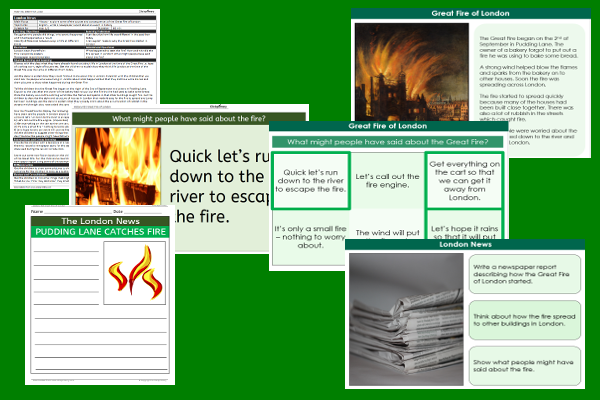Lesson Three – London News

This history teaching pack for Key Stage One gets the children to explore some of the causes and consequences of the Great Fire of London by composing a news report describing the start of the fire in Pudding Lane.
The class can suggest and record what different people might have said about the start of the fire as it began to spread throughout London in the seventeenth century.
Download this teaching pack including a lesson plan, classroom activities and an interactive presentation to teach the children to explore some of the causes and consequences of the Great Fire of London by composing a news report describing the start of the fire in Pudding Lane
Activities in this teaching pack include display posters to suggest what different people might have said about the Great Fire of London in the 17th century and a template to select and record information about the start of Great Fire in a news report.
The interactive presentation gets the children to explore how the Great Fire started in London in the seventeenth century and suggest how people responded to the event in different ways.
This lesson is part of a history scheme of work to investigate, describe and record information about some of the historical events surrounding the Great Fire of London that occurred in the seventieth century. There are teaching activities for shared learning, differentiated worksheets to support independent learning and an interactive presentation to introduce concepts and key skills.
-

Maths Measurement Assessment
Assess abilities in estimating, measuring and comparing a range of different measurements for length, mass and capacity
-

Family Life
Investigate and reflect on some of the special events and experiences that might happen in the life of a family
-

Final Sounds Word Guess
Practise playing some guessing and matching games to identify the spelling and meaning of words with different final sounds
-

Building Reports
Explore how to collect facts and information to work with when composing and presenting non-chronological reports about buildings that can be found in the local area
